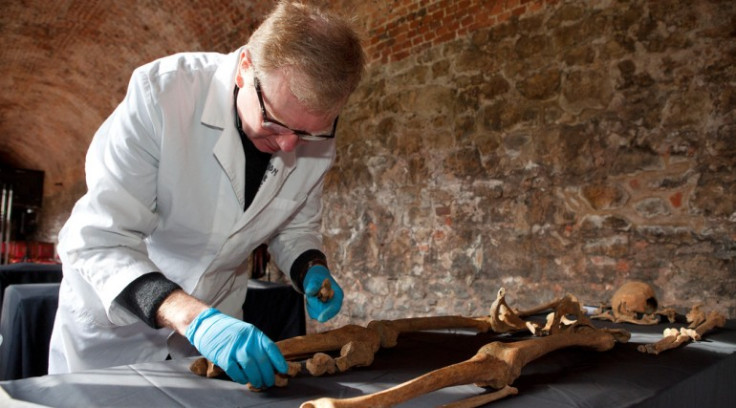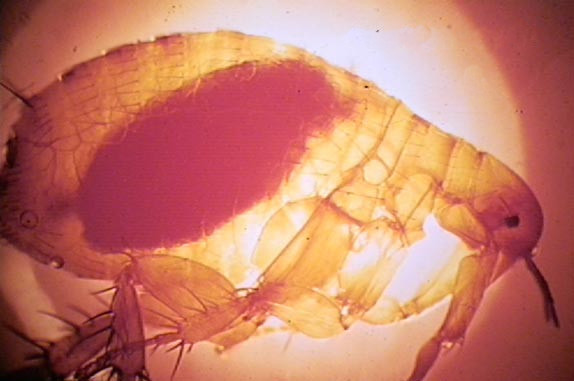The Black Death: 350th anniversary of bubonic plague that terrified City of London

The Great Plague of 1665 was the last major plague in England, with the outbreak beginning in London and spreading throughout the country. Within seven months 100,000 Londoners (20% or one-fifth of the population) were dead. Many fled from the capital to the country in a bid to avoid the disease. Victims were shut in their homes and a red cross was painted on the door with the words: "Lord have mercy upon us". Theatres and other public entertainments, such as football, were banned to stop the disease spreading.
Plague was caused by a bacterium called Yersinia pestis that often infects small rodents (like rats, mice and squirrels) and is usually transmitted to humans through the bite of an infected flea. In the past, black rats were the most commonly infected animals and hungry rat fleas would jump from their recently-dead rat hosts to humans, looking for a blood meal.
Those infected died in agony, says Don Walker, senior human osteologist at Museum of London Archaeology (MOLA). "They would get all kinds of different symptoms, such as headaches, pain, particularly in the extremities, coughing up blood. They'd develop buboes in the groin and neck which can become very, very painful. The pustules were black in colour and could develop into gangrenous lesions in the fingers and toes. Symptoms would probably develop in two to three days and death within seven to 10 days," says Walker.
One of the most recent finds in London is the Bedlam burial ground, also known as Bethlem and the New Churchyard, which is located at the western end of Liverpool Street in London. Over 20,000 Londoners are believed to have been buried at Bedlam between 1569 and 1738. The name derives from the nearby Bethlehem Hospital, which housed the mentally ill and was known as Bedlam, although only a small number of Bedlam residents are believed to have been buried there. Plague was the most common listed form of death, followed by infant mortality and consumption.

The skeletons have been excavated and taken to MOLA for laboratory testing. The scientists are hoping to map the DNA signature of the plague bacteria and possibly contribute to the discussion regarding what caused the Black Death.
The bones may also be radio-carbon dated with Walker and the team trying to establish the burial dates. "It's very rare to excavate plague victims, so it's very interesting for us. We were very lucky to get the chance to excavate in the Charterhouse Square, one of the first Black Death burial grounds.
"We can map out the evolution and the history of the disease, which in turn will help people study infectious diseases in the future. It's not just something about the past, it can help epidemiologists work with infectious disease, especially with emerging or re-emerging diseases."
Plague cannot survive for very long in the soil, so opening a grave site cannot re-infect human beings. "It's a myth," Walker says. After 650 years, only the skeleton bones remain and do not present any modern-day health risk.
In the Medieval period, people thought that animals might be spreading the disease, so strays were killed by special dog killers – around 40,000 dogs and 200,000 cats were slaughtered – hence the name of Houndsditch in the city of London where "dead dogges were there laid or cast".
People's lives and businesses suffered terribly because so many were shut in their homes. One eyewitness said that London became so quiet that every day was like a Sunday and grass started to grow in the streets. Many were forced to beg or steal food and money because the plague had a devastating effect on trade. People were terrified of the disease and some threw sick servants into the streets to die, while others refused to help sick friends and family. Samuel Pepys wrote in his diary: "The plague [is] making us cruel as dogs to one another".

The plague still exists today in countries like India and the United States. In October 2015, a 15-year-old schoolgirl is believed to have been infected with the bubonic plague by a flea bite while on a hunting trip in Oregon. After spending several days in intensive care, she is expected to make a full recovery. "Many people think of the plague as a disease of the past, but it's still very much present in our environment, particularly among wildlife," says Emilio DeBess, DVM, state public health veterinarian in the Public Health Division's Acute and Communicable Disease Prevention Section.
Being a bacterial infection, the disease can be treated successfully with a variety of antibiotics if diagnosed early. Symptoms usually occur two to six days after exposure and include flu-like fever, headaches, vomiting and swollen or painful lymph nodes.
"Without prompt treatment, the disease can cause serious illness or death," reports the Centres for Disease Control and Prevention Bacterial Diseases (CDC). "Presently, human plague infections continue to occur in the western United States, but significantly more cases occur in parts of Africa and Asia."
The bubonic plague caused the Black Death that killed an estimated 50 million people in Asia, Europe and Africa in the 14th century. Some historians have suggested that the collapse of the Roman Empire may be linked to the spread of plague by Roman soldiers returning home from battle in the Persian Gulf in 165AD. For centuries, plague represented disaster for people living in Asia, Africa and Europe and because the cause of plague was unknown, plague outbreaks contributed to massive panic in cities and countries where it appeared.
© Copyright IBTimes 2025. All rights reserved.






















